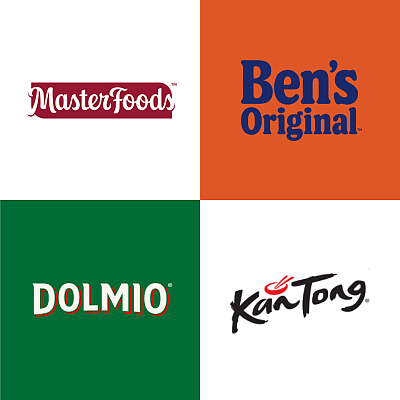By Lisa Manley, Vice President, Sustainability at Mars
Recently – and for the first time in two years – I had the opportunity to travel with the Mars social sustainability team to Thailand and Malaysia for immersions into our fish, rice, and palm oil supply chains.
We met with local Mars colleagues, visited ports and production sites, toured a new research center, met with suppliers and local NGOs, and visited key customers to see how our products get to market. We participated in the manual labor of oil palm fruit harvesting and witnessed the living conditions on fishing vessels. Through these visits, we saw firsthand the human rights challenges and opportunities within these supply chains and connected in-person with many people who help steward and influence our sustainability strategy. And while I’ve consistently been impressed with how our team has adapted during the pandemic, this trip made it clear that nothing can replace the impact of on-the-ground interaction with the people and places that make our business possible.
A few reflections:
Supply chain vulnerabilities are real and COVID has made them worse
We’ve all heard over the course of the past two plus years how supply chains are continuing to be rocked by ongoing complications caused by the pandemic. Our team saw firsthand the challenging working conditions that confront migrant workers and women at origin and in supplier manufacturing sites.
Migrant workers and women are the backbone of many supply chain labor forces. And they are, too often, vulnerable to risks that include but are not limited to health and safety, unethical recruitment, gender discrimination and violence, and an inability to access government provided benefits and support. These vulnerabilities were all present prior to the pandemic, but have been exacerbated as the world continues to experience economic and workforce disruptions and a rise in poverty.
According to the UN Foundation(Opens a new window), before the pandemic, women in low-resource countries were entering the formal workforce at unprecedented rates(Opens a new window) with one of every four employed women working in the agricultural industry. But the average woman working in developing economies is paid below a living wage, is a contract worker with little long-term stability, and experiences ongoing marginalization due to lack of social protection policies. The pandemic compounded these issues and forced many women out of the workforce, further risking lives, social wellbeing and livelihoods of female workers.
Migrant workers also are frequently at risk of a range of human rights risks. Due to ongoing travel restrictions, many migrant workers are unable to move with the same ease as before and businesses are unable to recruit and retain the same number of workers as they did prior to the pandemic – meaning they don’t have the level of labor they’ve relied on historically, resulting in lost crops, harvests, and profits.
This ripple effect of consequences is evidence of the systemic vulnerabilities that were brought to light during the pandemic and are not likely to fade in the near term.
We need to increase our focus on protections for migrant workers
On any given day, the ILO estimates(Opens a new window) more than 17 million people are likely working in conditions of forced labor in the private sector. Migrant workers are three times more at risk because they are often not protected by the law, are unable to exercise their rights, or are vulnerable to poorly governed or unethical recruitment practices. These are workers who leave their country in search of work because they cannot find it at home, whether because of war, poverty, or environmental disaster. And the work they do find is often that which others don’t want – it’s low paying, dangerous and lacks the oversight needed to ensure adequate health and safety. At the same time, because these workers are from another country and often in vulnerable situations, they frequently rely on recruiters that demand costly recruitment fees to place them in jobs. As a result, many migrant workers find themselves working dangerous, underpaid jobs where they struggle to save enough money to repay recruiters and secure their financial independence.
The fact is, migrant workers are critical in many global supply chains, filling gaps in the work force and sending home remittances that outpace foreign aid. As outlined by The Consumer Goods Forum(Opens a new window), there are three priority principles(Opens a new window) that can help address the root causes of forced labor: every worker should have freedom of movement; no worker should pay for a job; and no worker should be indebted or coerced to work. It’s time to elevate the focus on ethical recruitment practices within supply chains to ensure migrant workers are not indebted or coerced to work to pay off recruiter fees. Business can’t do this alone, and we should work with local governments and other stakeholders to understand risks and develop better supply chain practices that seek to protect migrant workers from forced labor.
It’s time to recognize the role of women in agricultural supply chains
Women represent nearly half of agricultural labor in developing countries. And yet, they continue to face compounding layers of inequities and bear a disproportionate burden of impact from poverty to climate change. But, evidence shows(Opens a new window) that agricultural output in developing countries could rise by 2.5 to 4% if women had access to the same products, services, and opportunities as men.
Investing in women’s economic empowerment is crucial for gender equality, poverty eradication and inclusive economic growth. It’s time to break down the barriers that hold women back and ensure equal access to education, land, finance, and agricultural inputs. CARE USA(Opens a new window) compiled a useful playbook(Opens a new window) for companies that outlines how business can leverage our influence to change norms and behaviors through purchasing and sourcing decisions.
Women and migrant workers remain in the most vulnerable jobs because of systemic inequities exacerbated by the pandemic. Investing in both groups will help build supply chains that are more resilient, productive, and profitable.
Impact at scale requires localized, collaborative action
The human rights risks facing women, migrant workers and others in global supply chains are complex but what is abundantly clear is that, in many cases, local organizations have tremendous insights about how to address them. During our trip, we spent time with many NGO and IGO partners, including Winrock International(Opens a new window), USAID(Opens a new window), Roundtable on Sustainable Palm Oil (RSPO)(Opens a new window) and Oxfam(Opens a new window). These organizations are on-the-ground and work closely with farmers, worker organizations and agricultural suppliers, seeing firsthand the persistent human rights challenges that exist in global supply chains.
NGOs offered grace throughout the pandemic, understanding how it impacted businesses and that, often, social impact took a shortfall due to health, safety, and other constraints. But now, NGOs – and the rest of the world – are seeing companies post record profits and are, understandably, no longer willing to accept COVID impacts as an excuse for deprioritized or delayed action.
There is also a crucial need for continued collaboration across industry. Many of us are working with the same suppliers on the very same issues. Until industry sectors and brands work together more effectively, we are missing an opportunity to drive this work further – and more efficiently – to make a difference for the people and communities within our supply chains.
While proud that progress has been made, I believe there is still a lot of work to be done.
At the end of the day, we should all be working to advance supply chains where work empowers people, human rights are respected and worker vulnerability is significantly reduced.















